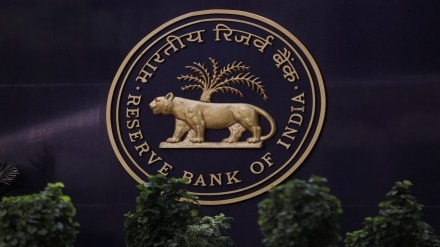The Reserve Bank of India’s (RBI) Monetary Policy Committee (MPC) meeting has entered its third day of deliberations with Governor Sanjay Malhotra all set to announce the decision on the key interest rate today at 10:00 am. According to economists, a status quo on the repo rate looks likely, despite low inflation, a stable rupee, and calls for a final rate cut to support growth.
A ‘dovish pause’ after three consecutive rate cuts
According to Barclays, the RBI MPC will deliver a dovish pause retaining the stance as ‘neutral’ rather than cutting rates immediately. The central bank has already cut the repo rate by 100 bps in quick succession over the past three meetings and it is expected to pause to assess the evolving economic data and risks. However, Aastha Gudwani, India Chief Economist, Barclays, said, “That’s not to say that the rate easing cycle in India is over, but it’s just about there.” The brokerage firm further maintained that a final 25 bps cut in October is likely, reducing the terminal rate to 5.25 per cent.
Since the June policy meeting, incoming data has been rather supportive of further easing – lower CPI inflation outcomes, surplus monsoon rainfall and encouraging progress on kharif sowing, contained vegetable price increases. Even as this backdrop is conducive for further monetary easing, Aastha Gudwani said that “it is not yet compelling enough to deliver a fourth straight rate cut, and exhaust the policy arsenal”.
“With transmission still working its way into the real economy through lending rates, impending Q1 FY26 GDP growth data release at end-August and ever-so dynamic tariff talks and negotiations still underway, we believe that the RBI MPC would choose to wait this policy out and let these events unfold, thereby keeping the powder dry,” she maintained.
“We also await the revised liquidity framework announcement, which the RBI may choose to not announce alongside the MPC statement,” she added.
Rationale for expectations of a ‘dovish pause’
CPI inflation softer than expected: According to Barclays, the MPC will likely revise down their FY26 CPI inflation forecast of 3.7 per cent by 30-40 bps in the upcoming meeting. Recent inflation data has been softer than expected, with CPI inflation between April and June averaging 2.7 per cent, below the RBI MPC’s earlier forecast of 2.9 per cent. July inflation is tracking even lower, at around 1.5 per cent, driven by disinflation not only in vegetables but also cereals and pulses, supported by favourable monsoon and kharif crop sowing progress.
Transmission improving, bank credit should follow too: Transmission of monetary easing into the banking sector is improving, with retail lending rates falling between 30-100 basis points since February 2025, reflecting effective pass-through of the repo rate cuts. “Amid still surplus liquidity conditions and front-loaded monetary easing, transmission is working its way into the real economy quite well, in our view. This, we believe, should eventually translate into improvement in bank credit flows,” said Aastha Gudwani.
Q1FY26 sees mixed economic momentum: High-frequency activity indicators show mixed results in Q1, with some sectors like government capital expenditure, two-wheeler sales, aviation cargo traffic, GST collection and steel production improving. In contrast, others like power supply, coal production, and port cargo have slowed. “Air passenger traffic, cement production, steel consumption, port cargo traffic were the key laggards,” Barclays said while maintaining that these indicators imply that overall economic momentum moderated in Q1FY26 and may fall short of the RBI’s 6.5 per cent growth forecast.
“On growth, we see momentum tapering, as reflected by high frequency activity indicators, and the imposition of relatively higher import tariffs by the US (compared with the rest of Asia), if retained, also poses a downside risk to growth,” said Aastha Gudwani.
US’ 25% tariff not in favour of a cut: On July 30, US President Donald Trump announced a 25 per cent import tariff on India plus an undisclosed ‘penalty’ for buying military equipment and energy from Russia, while threatening to raise it even further. While this is higher than tariffs faced by other Asian economies and poses downside growth risks, ongoing trade negotiations scheduled for late August offer hope for reductions.
In this context, Barclays said that the RBI MPC is wise to await further clarity before committing to more aggressive rate cuts, as the tariff risk, while important, is not yet severe enough to warrant immediate monetary policy easing. “We have previously highlighted that given the relatively closed nature of the Indian economy wherein domestic demand is the mainstay of growth, we do not see this 25 per cent tariff threat impacting GDP growth meaningfully, pegging the likely impact at ~30bp (on a full year basis),” Aastha Gudwani added.
